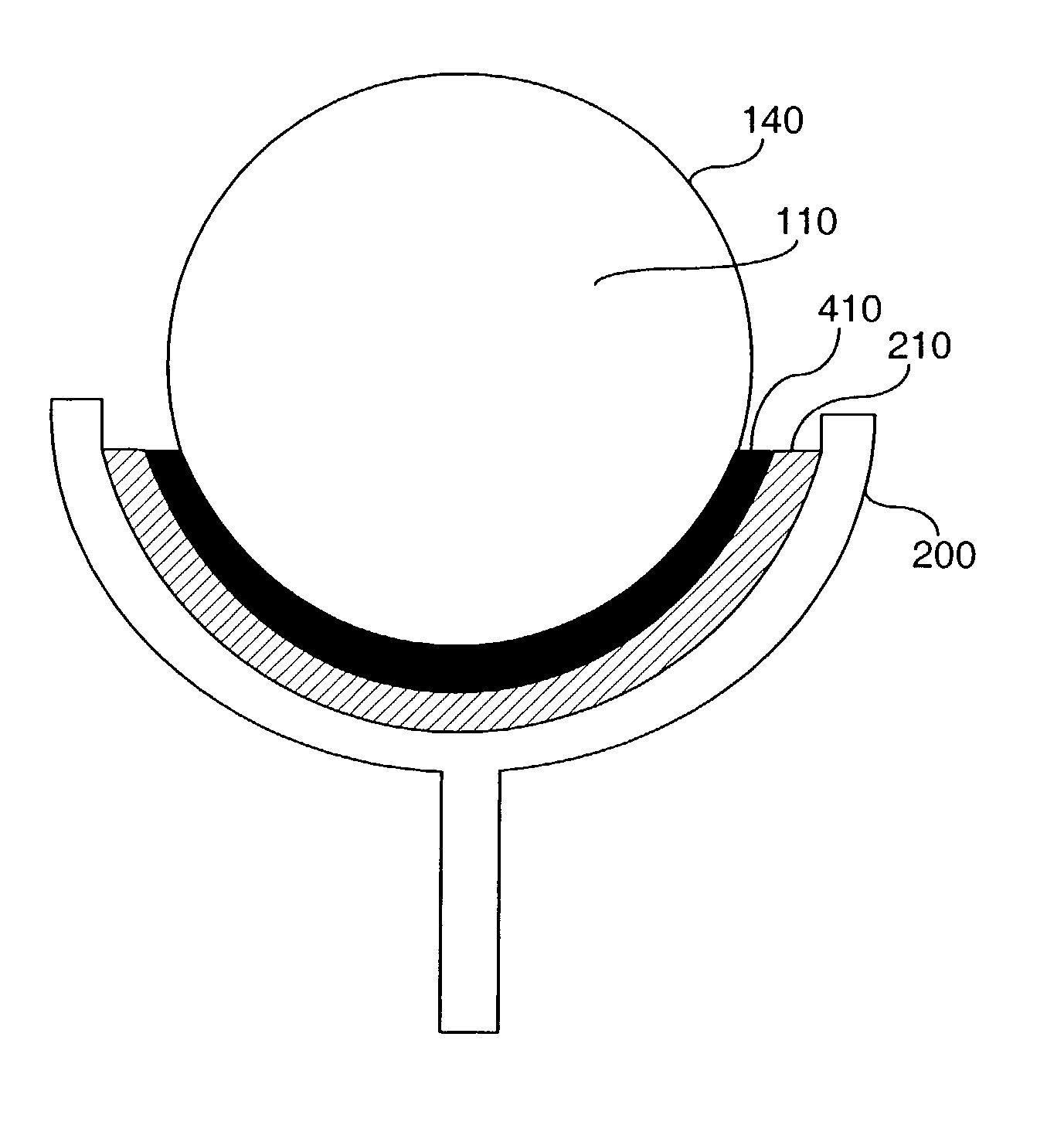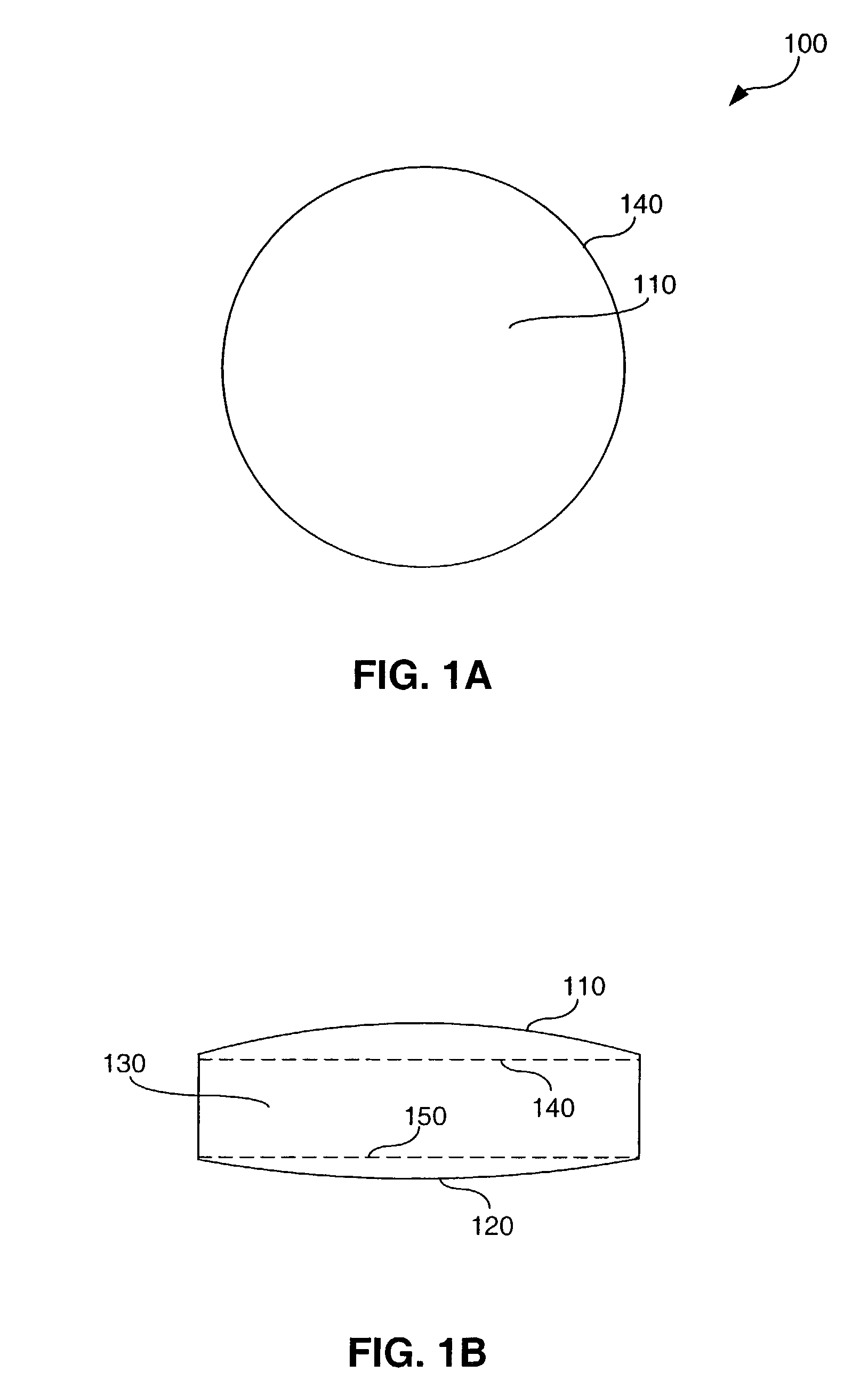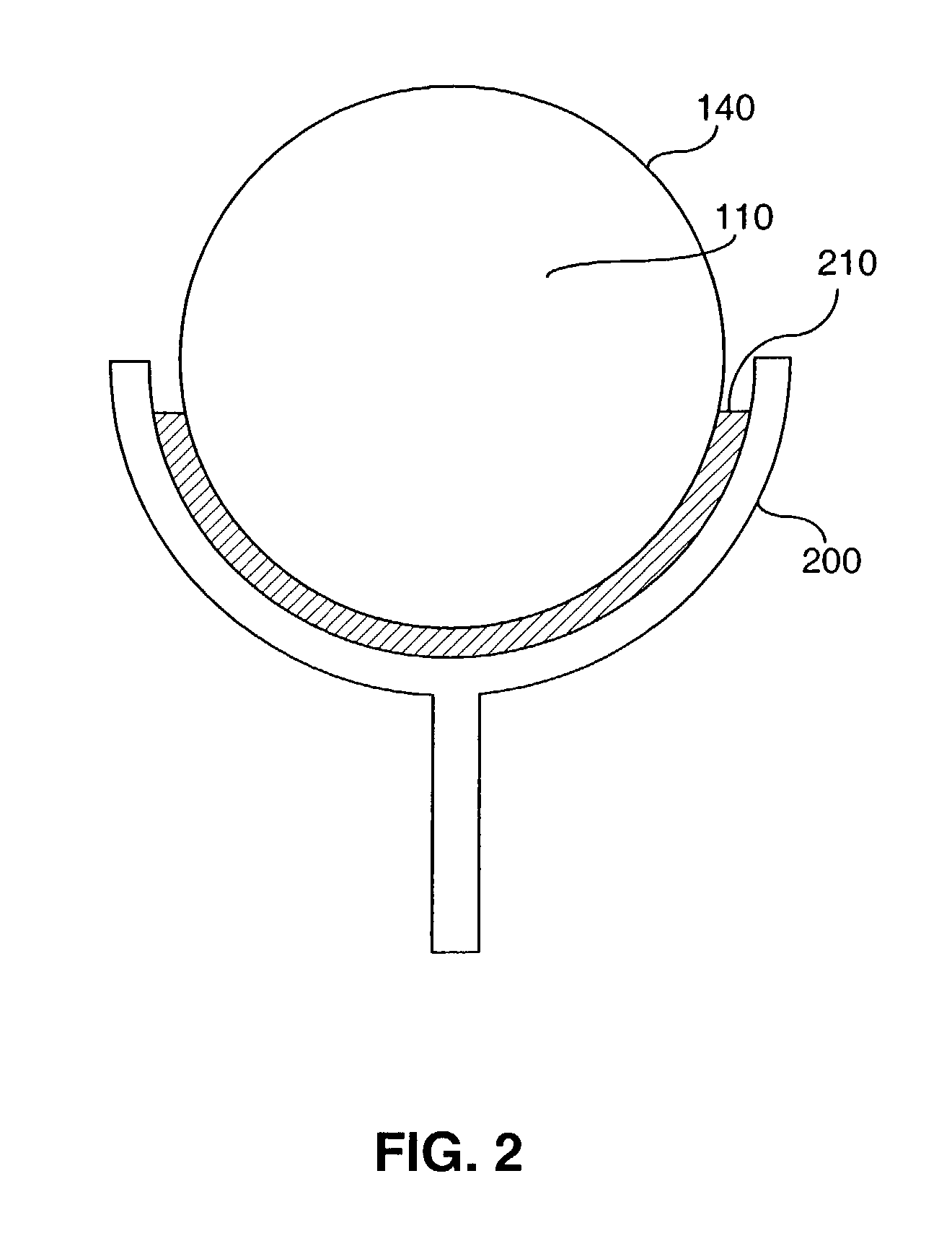Method for protection of adhesives used to secure optics from ultra-violet light
a technology of ultraviolet light and adhesives, applied in the field of optical elements, can solve the problems of reducing the performance or even failure deteriorating the adhesive, and reducing the performance of the optical system, so as to reduce the amount of scattered light emitted
- Summary
- Abstract
- Description
- Claims
- Application Information
AI Technical Summary
Benefits of technology
Problems solved by technology
Method used
Image
Examples
Embodiment Construction
[0023]While the present invention is described herein with reference to illustrative embodiments for particular applications, it should be understood that the invention is not limited thereto. Those skilled in the art with access to the teachings provided herein will recognize additional modifications, applications, and embodiments within the scope thereof and additional fields in which the present invention would be of significant utility.
[0024]FIG. 1A illustrates optical element 100. Optical element 100 may be any type of optical element that permits light to pass through. As can be more readily seen in FIG. 1B, for the ease of illustration, optical element 100 has been selected to be a convex lens.
[0025]FIG. 1B illustrates a perspective view of optical element 100. Optical element 100 comprises front polished optical surface 110, rear polished optical surface 120, edge 130, front edge boundary 140 and rear edge boundary 150.
[0026]Front edge boundary 140 represents the points form...
PUM
| Property | Measurement | Unit |
|---|---|---|
| thickness | aaaaa | aaaaa |
| thickness | aaaaa | aaaaa |
| wavelengths | aaaaa | aaaaa |
Abstract
Description
Claims
Application Information
 Login to View More
Login to View More - R&D
- Intellectual Property
- Life Sciences
- Materials
- Tech Scout
- Unparalleled Data Quality
- Higher Quality Content
- 60% Fewer Hallucinations
Browse by: Latest US Patents, China's latest patents, Technical Efficacy Thesaurus, Application Domain, Technology Topic, Popular Technical Reports.
© 2025 PatSnap. All rights reserved.Legal|Privacy policy|Modern Slavery Act Transparency Statement|Sitemap|About US| Contact US: help@patsnap.com



